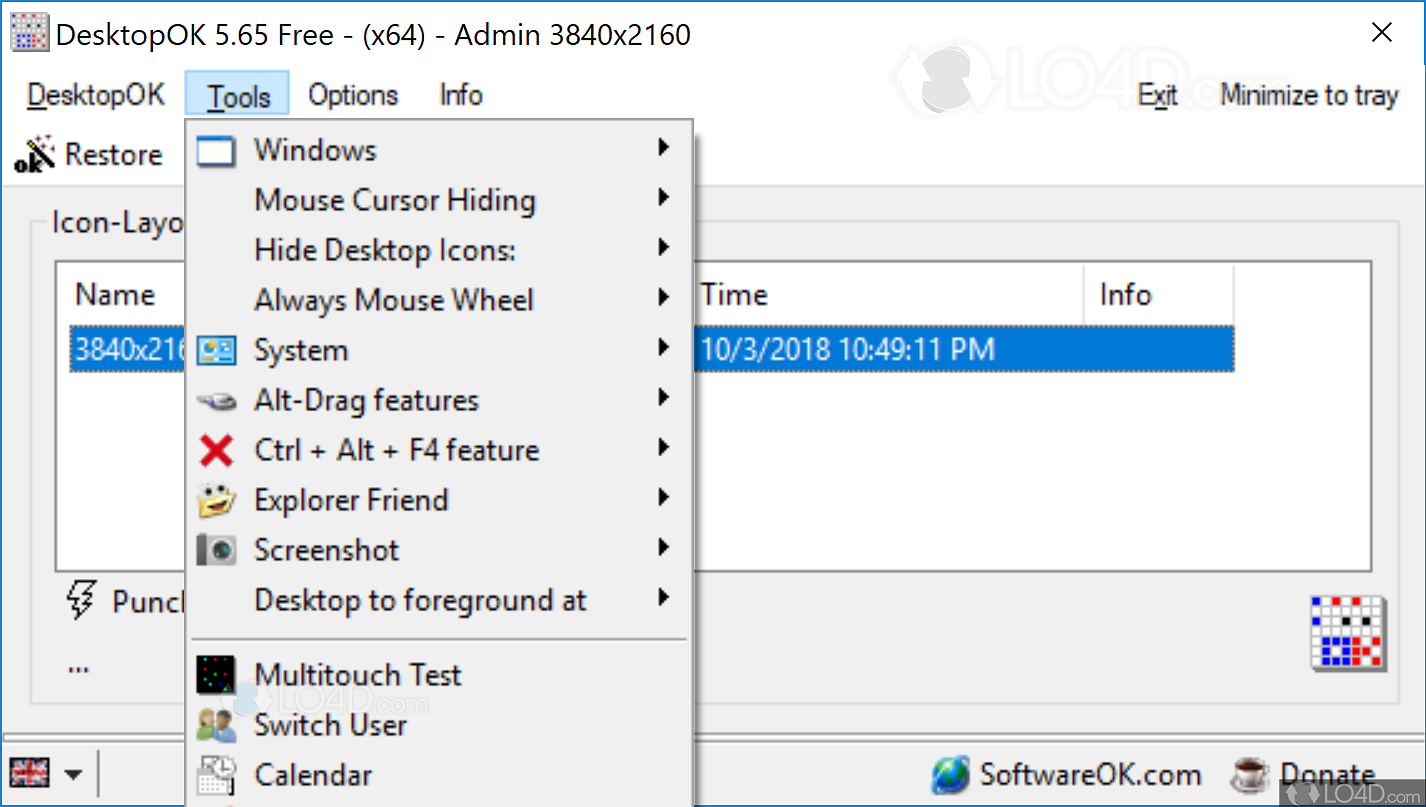

Yet another way is to double-click any saved layout in the list to quickly restore that layout. You can also right-click the saved layout and choose “ Restore” from the context menu. To restore a saved layout, select the layout from the list and then click the “ Restore Icon Layout” button. You will then see the “New Icon Position” name, resolution and icon number in the list of saved layouts. Click the “ Save Icon Layout” button to save the current desktop layout. – Align icons to Grid – this allows you to snap your desktop icons to a grid, similar to Windows’ Auto-Arrange feature)Įxtract the ZIP to any folder and then run the program. – CMD support (at CMD, type ReIcon /? for help) – Easily add “Save/Restore Icon Layout” to the right-click context menu – It’s portable, no need to install anything – Save your favorite icon layout for each resolution – Many improvements have been made in coding (The ContextMenuRestoreCount value in the ini file can be changed from 1 to 6) – More than 1 restore option has been added to the right-click menu – some new options under the Options menu – Option to update the previously saved backup from the list Set your icons the way you like them, save the layout, then restore this layout later when the need arises.

ReIcon solves this problem by allowing you to save your desktop layout and restore it later with the click of a button (or with the right-click context menu). to play games or use applications that require a specific resolution), you are probably familiar with the problem of your desktop icons being jumbled into a mess after you switch back to your normal resolution. If you frequently change your screen resolution (e.g. ReIcon is portable freeware that enables you to save and restore your desktop layout.


 0 kommentar(er)
0 kommentar(er)
